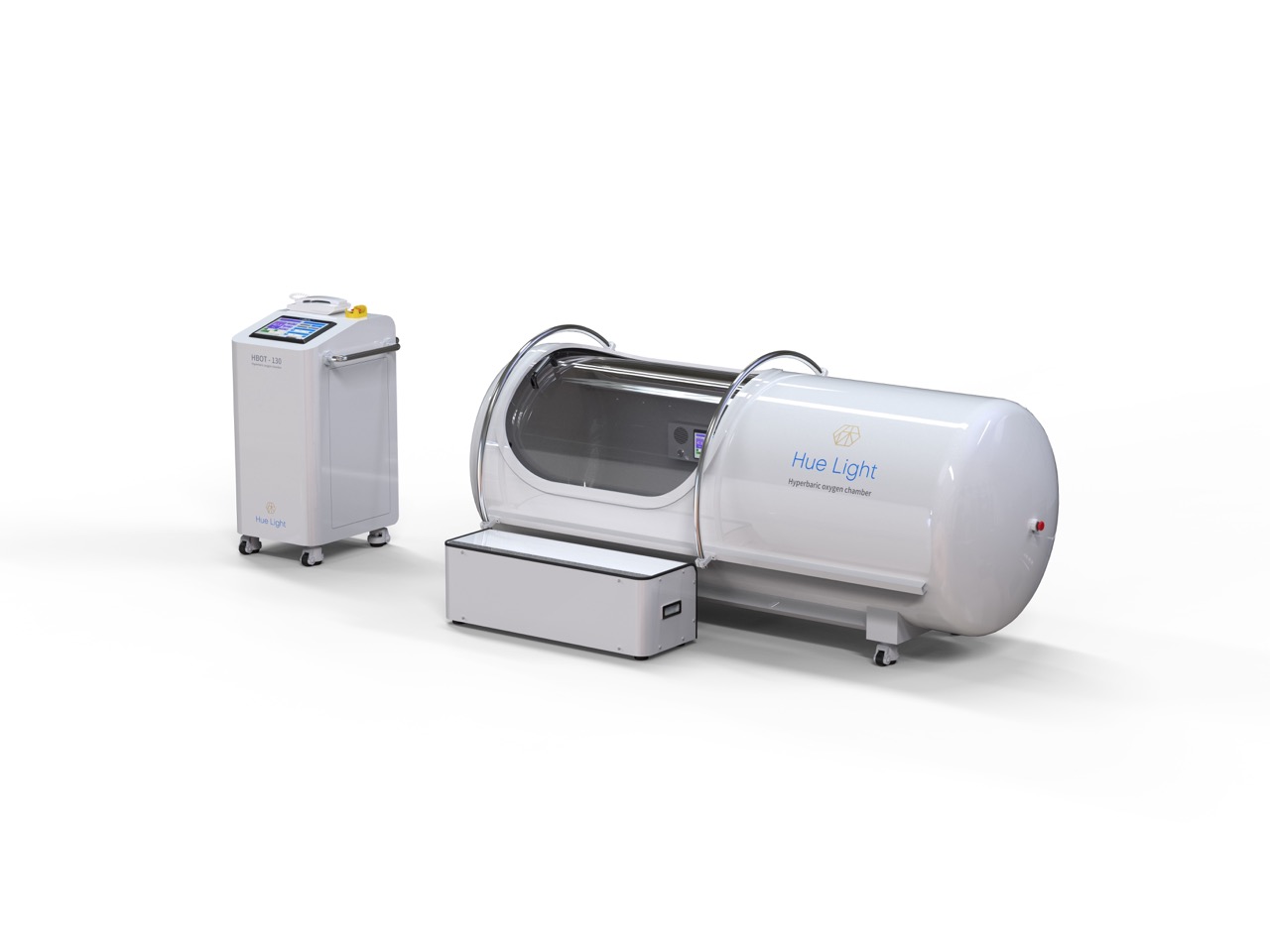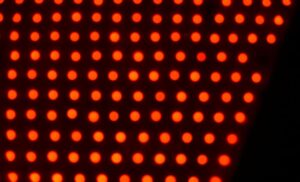Parkinson’s Disease (PD) is a progressive neurological disorder affecting more than 10 million people worldwide. It primarily impacts movement, causing tremors, stiffness, slow motion, and balance issues. But Parkinson’s is more than just motor problems; many patients also experience fatigue, depression, sleep disturbances, and cognitive decline, which can significantly affect daily life.
While medications like levodopa, dopaminergic treatments, and deep brain stimulation can help manage symptoms, they don’t stop the disease from progressing. This has led researchers and clinicians to explore complementary therapies that might improve both motor and non-motor outcomes.
In this blog, we explore the potential of Hyperbaric Oxygen Therapy (HBOT) as a treatment to slow the progression of Parkinson’s Disease. HBOT involves breathing pure oxygen in a pressurized environment, which is believed to enhance the body’s natural healing processes. But can it really slow down or even halt the progression of Parkinson’s Disease?
Understanding Hyperbaric Oxygen Therapy (HBOT)
What Is Hyperbaric Oxygen Therapy (HBOT)?

Hyperbaric Oxygen Therapy (HBOT) is a medical treatment in which patients breathe 100% oxygen in a pressurized chamber, usually at pressures greater than 1.4 atmospheres absolute (ATA). This controlled pressurization allows oxygen to dissolve more efficiently into the blood and reach tissues that normally receive less, supporting cellular function and tissue repair.
HBOT has a long history of medical use. It is FDA-approved for conditions such as:
- Decompression sickness in divers
- Carbon monoxide poisoning
- Non-healing diabetic wounds
- Radiation tissue injury
- Severe infections
Beyond these established uses, research is expanding HBOT’s potential applications for neurological conditions, including traumatic brain injury, stroke, multiple sclerosis, and Parkinson’s Disease. A study published in PMCID: PMC5851727 highlights how HBOT may improve neurological function and provide psychiatric benefits in Parkinson’s patients, demonstrating its emerging role in neurodegenerative disease care.
How HBOT May Help Parkinson’s Disease
The interest in HBOT for Parkinson’s Disease stems from its potential to address underlying mechanisms of neurodegeneration. PD involves oxidative stress, mitochondrial dysfunction, inflammation, and loss of dopaminergic neurons. HBOT may positively influence all of these processes.
-
Neuroprotection and Oxidative Stress
Oxidative stress plays a central role in the progression of Parkinson’s. HBOT helps by reducing free radical damage and improving cellular resilience. A review published in the Medical Gas Research Journal found that HBOT reduced oxidative stress markers and improved antioxidant activity in neurological conditions.
-
Mitochondrial Support
Mitochondria, the “powerhouses” of cells, are impaired in Parkinson’s patients, leading to low energy availability in neurons. HBOT supports mitochondrial function by promoting biogenesis and restoring energy balance. Research reported that HBOT can protect dopaminergic neurons by activating the SIRT-1/PGC-1α pathway, which stimulates mitochondrial biogenesis.
-
Neuroplasticity and Cognitive Function
Neuroplasticity refers to the brain’s ability to reorganize and form new neural connections. HBOT may enhance this process, leading to improvements in both motor and cognitive functions. Patients have reported better coordination, sharper memory, and improved attention after undergoing HBOT sessions.
-
Anti-Inflammatory Effects
Inflammation contributes to the degeneration of neurons in PD. HBOT has demonstrated anti-inflammatory properties, potentially slowing disease progression. By decreasing neuroinflammation, HBOT may also improve non-motor symptoms such as mood disturbances and fatigue.
Related Article: Hyperbaric Oxygen for Lyme Disease
Benefits of Hyperbaric Oxygen Therapy for Parkinson’s Disease
Hyperbaric Oxygen Therapy (HBOT) is attracting growing attention as a complementary approach to Parkinson’s care. By improving oxygen delivery to the brain and supporting cellular repair, HBOT may offer multiple benefits for patients. While research is still evolving, clinical studies and meta-analyses provide encouraging evidence across both motor and non-motor symptoms.
1. Improvement in Motor Symptoms
Motor impairments such as tremors, rigidity, and poor balance are hallmark features of Parkinson’s Disease. Clinical research suggests that HBOT may help improve these motor functions. A meta-analysis published on PubMed reported that HBOT improved motor scores (UPDRS III), reduced tremors, and enhanced coordination in Parkinson’s patients. These improvements are believed to result from enhanced tissue oxygenation and better neuronal activity.
2. Cognitive Function Enhancement
Cognitive decline, including memory problems, attention deficits, and reduced executive function, is a common non-motor symptom of Parkinson’s. HBOT may support cognitive health by boosting oxygen supply to the brain and promoting neuronal repair. Evidence from systematic reviews indicates that HBOT can enhance attention, memory, and problem-solving ability in neurological patients. This aligns with emerging reports suggesting similar benefits for those with Parkinson’s.
3. Relief of Non-Motor Symptoms
Parkinson’s is not only about motor difficulties; it also includes symptoms such as depression, anxiety, fatigue, and sleep disturbances. HBOT may help alleviate these issues through its anti-inflammatory and neuroprotective effects. A meta-analysis published in Frontiers in Neurology found that HBOT significantly improved sleep efficiency, total sleep time, and reduced nighttime awakenings among Parkinson’s patients. These findings suggest HBOT may provide relief for some of the most disruptive non-motor challenges faced by PD patients.
4. Neuroprotection and Cellular Health
One of the most promising aspects of HBOT is its potential to protect neurons. Parkinson’s is driven by the degeneration of dopaminergic neurons, which are responsible for producing dopamine, a chemical vital for movement control. HBOT has been shown to promote mitochondrial biogenesis and reduce oxidative damage. A study published in Biomolecules demonstrated that HBOT activates the SIRT-1/PGC-1α pathway, which supports mitochondrial function and helps preserve dopaminergic neurons.
5. Improved Quality of Life
Beyond clinical markers, many patients undergoing HBOT report feeling better overall. Increased energy, improved mood, and better day-to-day functioning are commonly observed benefits. A case study highlighted how Parkinson’s patients receiving HBOT experienced meaningful improvements in both motor and non-motor symptoms, contributing to an enhanced sense of well-being. By addressing multiple aspects of the disease, HBOT may help patients live more independently and enjoy a better quality of life.
Related Article: Hyperbaric Oxygen Chamber Benefits
Scientific Rationale Behind HBOT in Parkinson’s Disease
The potential benefits of Hyperbaric Oxygen Therapy (HBOT) in Parkinson’s Disease are rooted in several biological mechanisms that directly target pathways involved in neurodegeneration.
- Increased Oxygen Delivery
By raising oxygen levels in the blood and tissues, HBOT enhances neuronal survival and supports brain regions affected by reduced blood flow or oxidative damage. - Reduced Inflammation
Neuroinflammation contributes to the progressive loss of dopaminergic neurons in Parkinson’s. HBOT has demonstrated anti-inflammatory properties, which may help protect neurons and slow disease progression. - Stimulation of Neuroplasticity
HBOT can promote neuroplasticity, the brain’s ability to reorganize and form new neural pathways. This may support improvements in both motor function and cognition, offering patients better daily function. - Enhanced Mitochondrial Function
Mitochondria play a critical role in energy production, but their dysfunction is a hallmark of Parkinson’s. HBOT has been shown to improve mitochondrial activity, restore energy balance, and promote long-term neuronal health.
Together, these mechanisms highlight why HBOT is being explored as a promising adjunct therapy in the management of Parkinson’s Disease.
Scientific Evidence and Research on HBOT in Parkinson’s Disease
Although HBOT is not yet a standard therapy for Parkinson’s, scientific evidence ranging from animal studies to early clinical research provides encouraging insights.
- Animal and Cellular Studies
Laboratory studies demonstrate that HBOT can reduce oxidative stress, protect dopaminergic neurons, and improve antioxidant activity. For example, research published in Biomolecules found that HBOT lowered oxidative stress markers in neurological disease models. - Human Clinical Studies
Early clinical trials and patient case reports suggest HBOT may improve both motor and cognitive symptoms in Parkinson’s patients. Reported benefits include better tremor control, improved balance, enhanced coordination, and clearer cognitive function. - Mechanistic Research
At the cellular level, HBOT appears to work through mitochondrial support, reduced inflammation, and improved neuroplasticity. A study published in Biomolecules highlighted HBOT’s ability to activate the SIRT-1/PGC-1α pathway, a mechanism that supports mitochondrial biogenesis and protects dopaminergic neurons.
While these findings are promising, researchers emphasize the need for larger, randomized controlled trials to confirm effectiveness, determine optimal treatment protocols, and establish HBOT’s role in Parkinson’s Disease care.
Safety, Side Effects, and Considerations
Hyperbaric Oxygen Therapy (HBOT) is generally considered safe when administered by trained professionals in accredited facilities. Still, like any medical treatment, it carries potential risks and side effects that patients should be aware of:
- Barotrauma: Changes in pressure may cause discomfort or injury to the ears, sinuses, or, in rare cases, the lungs.
- Oxygen Toxicity: Prolonged exposure to high oxygen levels can lead to lung irritation or, very rarely, seizures.
- Claustrophobia: Some patients may feel anxious or uncomfortable inside the enclosed hyperbaric chamber.
To minimize risks, it is essential to undergo HBOT only after a thorough medical evaluation and under proper clinical supervision. Safety guidelines outlined by the U.S. Food and Drug Administration (FDA) and the Undersea and Hyperbaric Medical Society (UHMS) emphasize the importance of patient screening, adherence to established treatment protocols, and continuous monitoring during therapy.
Limitations of HBOT for Parkinson’s Disease
While Hyperbaric Oxygen Therapy (HBOT) shows promise in managing Parkinson’s Disease symptoms, it is not a cure, and several limitations remain:
- Lack of Large-Scale Clinical Trials: Current evidence comes mostly from small studies and case reports. More randomized controlled trials are required to establish effectiveness and safety across diverse patient populations.
- Variability in Treatment Protocols: HBOT protocols differ in terms of pressure levels, session length, and frequency. This lack of standardization makes it difficult to compare results and develop universal treatment guidelines.
- Accessibility and Cost: HBOT is not widely available in all regions, may only be offered in specialized centers, and is often not covered by insurance. This makes access limited and potentially costly for patients.
Why Choose HueLight for Hyperbaric Oxygen Therapy?
HueLight offers specialized hyperbaric chamber treatment for Parkinson’s Disease, combining cutting-edge technology with professional care. Our therapy programs are designed to:
- Deliver precise oxygen therapy in a comfortable environment
- Support both motor and non-motor symptoms of Parkinson’s
- Enhance overall neurological and cellular health
- Provide a safe, clinically informed treatment experience
Our goal is to give patients a complementary therapy option that supports their ongoing Parkinson’s care, helping improve quality of life.
Conclusion
Hyperbaric Oxygen Therapy is an exciting area of research in the management of Parkinson’s Disease. By improving oxygen delivery, supporting mitochondrial health, reducing inflammation, and enhancing neuroplasticity, HBOT offers potential benefits for both motor and non-motor symptoms. Early evidence and patient experiences suggest improvements in energy, mood, and overall quality of life.
However, HBOT is not a cure for Parkinson’s, and more large-scale studies are needed to confirm its long-term effectiveness and to establish standardized treatment protocols. For now, it should be considered a complementary therapy, used in combination with conventional treatments such as medication, physical therapy, and lifestyle management.
For those interested in exploring HBOT, consulting with a healthcare professional is essential to determine suitability and safety. With growing evidence and patient-reported benefits, HBOT stands as a potential adjunctive therapy that offers hope for improving the daily lives of individuals living with Parkinson’s Disease.











